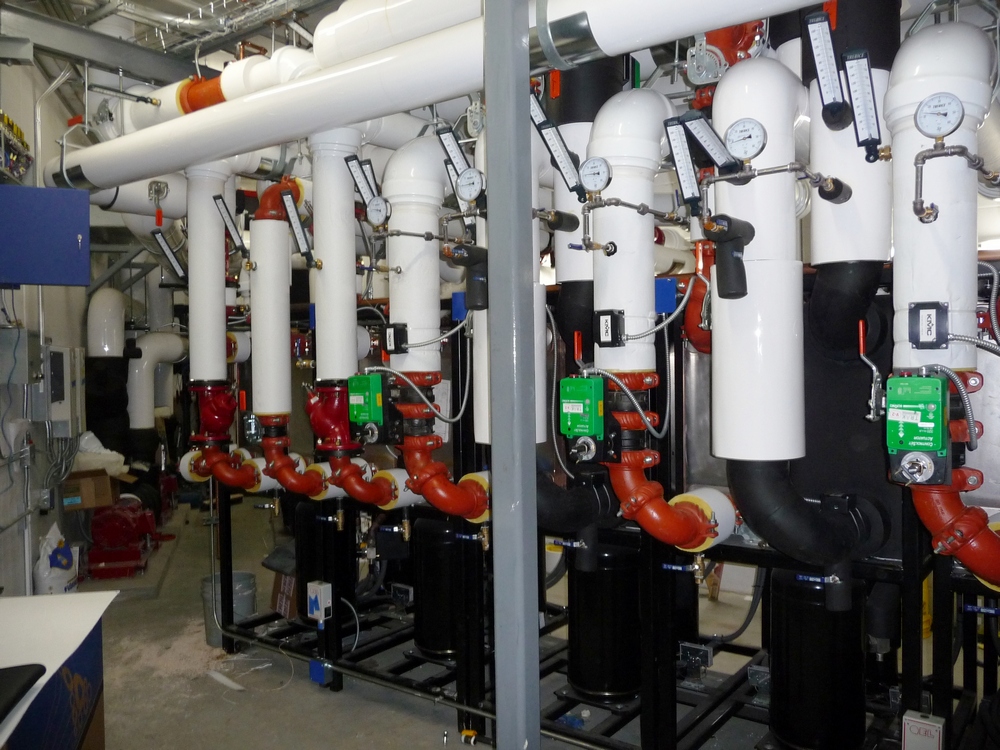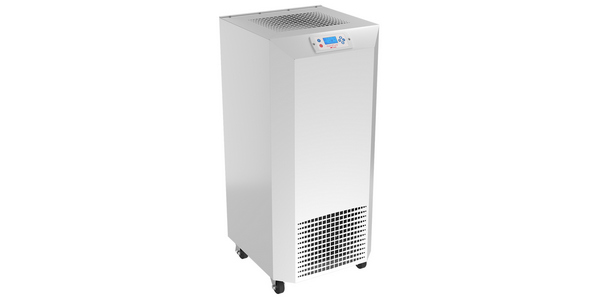3 Sustainable HVAC Strategies Gaining Momentum
By Cynthia Sandoval & Katie MacKenzie

Sustainable HVAC technology is not a passing trend; it is the future. Most professionals are familiar with
the technology itself by now, but the industry could stand to develop better strategies for approaching
and discussing how these solutions can support a cleaner environment with lower carbon emissions.
HVAC professionals must adapt to retain contracts with eco-conscious government and
private sector clients. With even more rigorous carbon emissions regulation on the horizon, the industry
is seeing the effects of three decarbonization strategies: electrification, refrigerant management and
emissions tracking.
Accelerated electrification using heat pumps
Electrification plays a crucial role in the journey toward reducing carbon emissions. Heat pumps, when
used efficiently and powered by increasingly low-carbon electricity, can deliver dependable space
heating while helping lower a building’s carbon footprint.
“But heat pumps shouldn’t be used in cold climates,” you might say. We’re not talking about yesterday’s
heat pumps. Today’s high-efficiency heat pumps provide heating in colder regions while shifting building
systems from gas to electricity. They will be instrumental in reducing emissions as owners retrofit
existing buildings to meet changing energy efficiency standards.
For example: where older heat pumps used inverter compressors to lower heating capacity during low
load times in warmer weather, today’s heat pumps use inverters to increase it during cold weather. This
change lets the heat pump modify how much energy is needed to keep the building comfortable,
boosting energy efficiency. Companies with emissions reduction goals will be driven to build and retrofit
their systems to enhance performance and maximize energy efficiency.
Owners may still balk at the upfront cost of installing heat pumps, but state and federal governments
are providing options for rebates, tax credits and energy efficiency programs. At a federal level, the
Inflation Act of 2022 extends income tax credits to homeowners on heat pumps purchased and installed
until the end of 2032. Research what programs are available in your state to lessen the weight on their
pocketbook.
Refrigerant phase downs + phase outs
Refrigerants are a huge part of the broader sustainability conversation, and restrictions are coming. In
an effort to slash carbon emissions, the AIM Act will ban the manufacture and import of HVAC systems
that use high global warming potential HFC refrigerants by Jan. 1, 2025 and the installation of new
systems by Jan. 1, 2026. Although the industry is not new to refrigerant phase downs, this policy brings a
new set of challenges.
The new generation of refrigerants, known as A2L refrigerants, are mildly flammable compared to the
previous generation. HVAC contractors must be prepared for this ongoing transition and train technicians on proper safety procedures and handling requirements. If a technician has already earned
the EPA Section 608 Technician Certification, they will be able to purchase A2L refrigerants. Otherwise,
manufacturers provide courses for technicians looking to get certified.
Not all HVAC tools are compatible with A2L refrigerants. Review leak detectors, vacuum pumps,
manifolds and recovery machines to figure out what, if any, equipment will need to be replaced.
The future: Emissions tracking
Another decarbonization strategy is on the horizon: carbon emissions tracking. Specifically, embodied
carbon, the greenhouse gas emissions created from the manufacture, transport, installation,
construction, maintenance and disposal of materials.
Green equipment procurement policies like Buy Clean are cropping up at local, state and federal levels.
These Buy Clean policies are designed to reduce embodied carbon emissions by adding emissions
tracking and lower overall carbon use requirements into the government’s construction procurement
process. To comply with these policies and support customers who want sustainability certifications,
contractors and subcontractors will need to learn how to best track their emissions data.
These procurement policies are only one facet of emissions tracking: new design standards are also
being proposed that would require companies to manage embodied carbon generated by mechanical
systems. ASHRAE and the International Code Council proposed a new standard this year, Standard 240P,
to calculate and document greenhouse gas emissions that contribute to embodied carbon.
Businesses should work toward developing internal processes and procedures that make tracking easier,
more accurate and efficient. This may include hiring dedicated project staff to complete data tracking
throughout a project’s entire lifecycle. That could look like technicians being included in the process
through record-keeping around vehicle emissions to, from and while on a jobsite, for example.
Continuous learning and training will be key to understand and adapt to expanding sustainable initiatives. It
is best to dedicate time to align teams on sustainability policies and manage their effects on daily
operations. Once contractors are armed with information, they can better serve customers and maintain
worker safety.
Additional resources: emissions tracking, the refrigerant transition and electrification.
Cynthia Sandoval is building sciences engineer at Harris.
Katie MacKenzie, P.E., is an associate at Harris.


